Concrete Repair Contractors & Services
Concrete Repair, Milling, Scarifying, & Shaving Services
If you have an existing concrete area (indoor or outdoor) that needs some attention - either some small patching and smoothing, or filling and fixing large gaps and damages, we can help.
We offer a variety of concrete repair services, including:
- General repair & refurbishing
- Concrete milling
- Concrete scarifying
- Concrete shaving
- Concrete Sealing
- Concrete expansion joint filling
At Toronto Epoxy Pros, we are expert concrete repair contractors, and can help evaluate your concrete project and help you every step of the way.
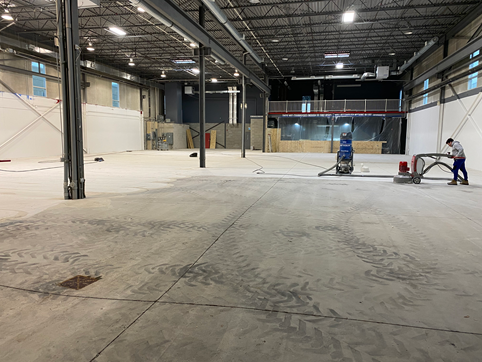
Our Concrete Repair & Restoration Services floor repair, concrete milling / scarifying, shaving, sealing, expansion joint filling, etc.

Concrete Floor Repair
We can repair, restore, and refurbish any damaged concrete surface that has seen better days, and fill or smooth out large holes or cracks in your surface, to create a new, smoother surface that will last longer.

Concrete Milling
A concrete milling machine is used, and uses a rotating cutting tool to strip the top layers of the concrete to create a smoother surface. The milled down surface will also have better grip and be less slippery.

Concrete Scarifying
Using a concrete scarifier, spinning metal blades will chip away at the top layer of the concrete surface, removing the top coating layer, and creating a more level space. This is especially useful in areas where the concrete has shifted and is unlevel.

Concrete Shaving
Concrete shaving (or grinding) uses abrasive diamond pads to grind or shave down the surface (which is rough) to create a smoother surface. This is better for areas that are level and without large damages, but where you want a smoother or more polished concrete surface.

Concrete Sealing
Sealing is usually the last stage of most concrete repairs, but can also be done on concrete surfaces that aren’t significantly damaged and just need a little extra protection on the top surface - or to protect a repair project you’ve already completed.

Concrete Joint Filling
When concrete is poured intentionally in separate pieces to create a gap, we can fill the expansion joints to prevent the slabs from expanding and contracting too much, which can cause excess stress on the concrete, and even cause it to break.
Concrete Repair & Restoration Process
A concrete repair & restoration project typically has 6 steps:
Evaluate Extent of Damage
An expert will evaluate the area through discussions, photos, or a physical inspection to determine exactly how much damage there is that needs to be repaired - for example, are we repairing large uneven holes or just some small cracks or fissures? This will help determine what equipment, tools, and techniques will be used in the project.
Remove Debris
We’ll remove any crumbled or chipped concrete from the project area, and brush or vacuum away dust, small stones, and other debris. This debris can interfere with the repair process, so it’s important to clean the area fully and then spray with water before getting started with any actual repairs.
Repair Major Damage Areas
Once it’s determined what the project will entail and the order of the process, we’ll start by dealing with the heavily damaged areas like large holes or cracks by smoothing, filling, and leveling them out. This will create a better surface for any new layers of concrete.
Grinding, Sanding, Milling, & Scarifying
Any combination of grinding (using pads to smooth down a surface), sanding (smoothing out smaller rough areas), milling (stripping off top layers to create a smoother surface), or scarifying (using spinning metal blades to chip away at the top layers) may be used in this process to smooth down rough layers or take off the damaged top layer to create a new, better, smoother, and more level surface to work with.
Apply New Concrete
We prep and apply new cement to fill in (now smoothed out) damaged areas, and create a new top layer surface to work with. How much is poured will depend on how damaged the concrete area previously was. We’ll smooth this surface out to your specifications, and let it dry (and cure).
Finishing & Curing the Surface
After the concrete has cured, we will generally grind the area smooth prior to commencing the coating process.
Evaluate Extent of Damage
An expert will evaluate the area through discussions, photos, or a physical inspection to determine exactly how much damage there is that needs to be repaired - for example, are we repairing large uneven holes or just some small cracks or fissures? This will help determine what equipment, tools, and techniques will be used in the project.
Remove Debris
We’ll remove any crumbled or chipped concrete from the project area, and brush or vacuum away dust, small stones, and other debris. This debris can interfere with the repair process, so it’s important to clean the area fully and then spray with water before getting started with any actual repairs.
Repair Major Damage Areas
Once it’s determined what the project will entail and the order of the process, we’ll start by dealing with the heavily damaged areas like large holes or cracks by smoothing, filling, and leveling them out. This will create a better surface for any new layers of concrete.
Grinding, Sanding, Milling, & Scarifying
Any combination of grinding (using pads to smooth down a surface), sanding (smoothing out smaller rough areas), milling (stripping off top layers to create a smoother surface), or scarifying (using spinning metal blades to chip away at the top layers) may be used in this process to smooth down rough layers or take off the damaged top layer to create a new, better, smoother, and more level surface to work with.
Apply New Concrete
We prep and apply new cement to fill in (now smoothed out) damaged areas, and create a new top layer surface to work with. How much is poured will depend on how damaged the concrete area previously was. We’ll smooth this surface out to your specifications, and let it dry (and cure).
Finishing & Curing the Surface
After the concrete has cured, we will generally grind the area smooth prior to commencing the coating process.
Concrete Repair Benefits & Features
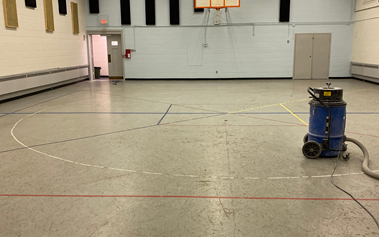
Extend the Lifespan
A Small Repair Can Make It Last Years Longer
Concrete is often an upfront investment, but should last for many years with little maintenance. Fixing small issues quickly or dealing with a major issue as a repair can prevent you from needing to replace the entire concrete surface - especially if it’s an area with a lot of square footage.

Floor repair project on existing floor to make it last longer
A Repair Can Actually Strengthen the Area
Concrete densifying is a process that can actually put strength into layers of concrete - even if you are shaving down the surface. Shaving or milling doesn’t necessarily mean the concrete will be thinner or less strong, and a number of our techniques can help improve the structural integrity of the entire concrete area.
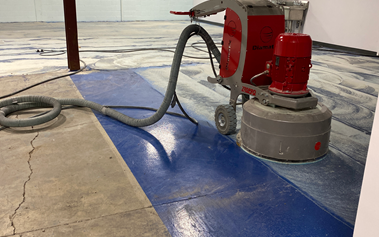
Enhanced Safety & Standards
Keep the Foot Traffic Safer
If your area is used by customers, employees, or you have industry standards to adhere to, you need to make sure the area doesn’t have large holes or damages that can create tripping hazards for those using the space. A repair can fix these right up so you don’t have a lawsuit on your hands.

Improve Aesthetics
Refresh the Area & Make It Shine
You also want your area to be appealing, especially if it’s used by customers. Damaged concrete can deter people from using the space, while a repair can ensure it’s used safely by everyone. Smoothing, coating & polishing can give old floors new life.
How to Choose a Concrete Repair Contractor
Insured, Accredited, & Well-Reviewed
With concrete repair, a contractor should come with liability insurance and WSIB to ensure you are fully covered.
Experts Making Recommendations
A good concrete repair contractor should be experienced enough with additional materials and flooring types to make specific recommendations to you about your unique space. They should fully understand the concrete process, and be able to determine exactly what work needs to be done (shaving, scarifying, coating or sealing, etc.).
Proper Quoting & Pricing Process
Make sure the company you choose will quote you on the work beforehand, and ask the right questions (square footage, state of the concrete surface, are there any large damaged areas?, etc.) to give you a more accurate price range, and then offer a fair price for the work.
Why Work with Toronto Epoxy Pros?

Insured & WSIB-Certified
Our concrete repair contractors will bring peace of mind to your project, and help you with the unique needs of your project the whole way through. You can trust our work, as we’re WSIB-certified, and have $2 million liability insurance coverage for all projects.

Epoxy Installation Experts
We’ve completed numerous concrete repair projects, and bring installers with years of experience so you can feel confident in the work on your floor being completed to your exact expectations, and on time, with the best recommendations for your needs taken into account before we even begin.

Fair Epoxy Floor Installation Prices
We offer competitive pricing for concrete repairs, and we know how to maximize efficiency and reduce installation time to create the perfect balance of a job well done, but quickly and within your budget.
Concrete Repair & Restoration Costs
Top 5 factors that affect concrete repair cost
The cost to have concrete flooring repaired, restored, shaved, scarified, milled, or sealed depends on a number of factors, including which of those techniques need to be utilized during the process. It’s also significantly affected by how large the area is, and what state the concrete is in before the project begins - large damages and cracks are more difficult to repair than small scuffs.
The most common factors that affect the cost of concrete repair are:
- The amount of damage in the concrete area - Things like large cracks and dents or unlevel surfaces require a lot more work than touching up a gently walked on surface or small scuffs.
- Whether grinding, scarifying, shaving, or milling is required - This will affect the tools and equipment required, as well as the time commitment.
- If the concrete also needs to be polished or smooth after - The smooth look requires diamond pad grinding and the type of glossy look could take additional time.
- If you want the surface to be strengthened with a densifier - You can actually strengthen your concrete surface while repairing or smoothing it, but this process would also add some additional cost to the project.
- Requiring overtime hours to meet extreme project timelines - If your project is in an area that you don’t want shut down, we can meet your needs, it may just cost a bit more.
Is concrete repair and restoration expensive?
Concrete repair can be expensive, but it really depends on how many additional factors (like those listed above) apply to your individual project. A repair of a small concrete patio will cost much less than a full repair of damages and concrete polishing of a big box retailer. In general, the cost to repair concrete and maintain it to extend its life is still more cost-effective than many other flooring types.
Roughly, what does a polished concrete repair cost per square foot?
There is no real average as each project is so different and remedies for each situation can vary extensively. It's best to speak with one of our concrete experts about your project needs.
What Areas Benefit Most from Concrete Restoration & Repair?
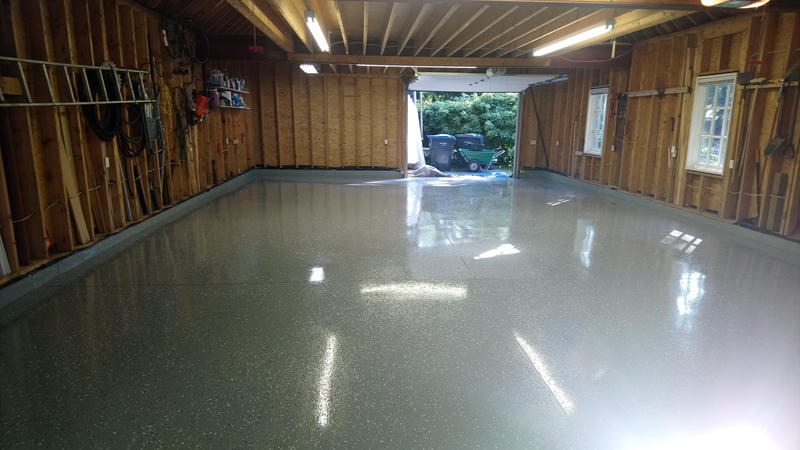
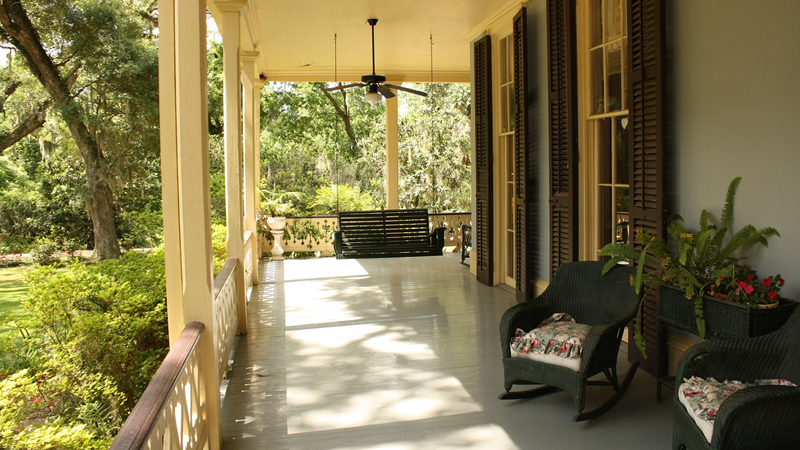

Concrete Repair & Restoration FAQs
When is starting a concrete repair project a good idea for me?
Going through with a concrete repair is a good idea if:
- You have any significant damages like large holes
- You see cracks running through the surface, especially long or thick ones
- You have a big fissure or crack that runs from one end to the other
- The surface has become uneven or unlevel
- You can see minor bumps, scuffs, or unappealing looking small damages
- The area is used a lot of gets a lot of foot traffic
- The area is used a lot by customers and needs to look appealing all the time
- You haven’t touched the surface since it was installed, and the installation was 10-15 years ago or more
Are there different types of concrete surfaces?
There are a few finishes you can get with concrete surfaces, some of which can be achieved through a small repair alone:
- Smoothed Concrete Uncoated - The typical finish, which will smooth out the poured concrete and create a level, but slightly rough surface
- Polished Concrete - The surface is extremely smooth and will appear glossy - almost like glass
- Milled Concrete - The surface will have small grooves or lines through it which can offer more grip to the surface (and make it less slippery)
Sealed Concrete - Allows the surface to be easily cleaned and not absorbent.
What’s the difference between grinding/shaving, milling, scarifying, and joint filling concrete?
The different techniques for concrete repair typically use separate tools and equipment:
- Grinding/Shaving: Uses abrasive diamond tooling to smooth down a surface. This is used in typical situations and when there isn’t significant damage.
- Milling: Aggressively removes a layer or concrete to create a more level surface . This helps level raised areas. Specifically expansion joints that are not flush.
- Scarifying: Uses spinning metal blades from a scarifying machine to chip away at top layers. Can be useful in situations where large chunks of the top layer need to be removed.
Expansion Joint Filling: Uses expansion joint filler to fill the spaces between concrete areas poured separately to prevent damages when the pieces expand and contract.
Is Toronto Epoxy Pros insured?
Yes, our concrete repair contractors are certified under the Workplace Safety and Insurance Board (WSIB), and under our $2 million liability insurance coverage.